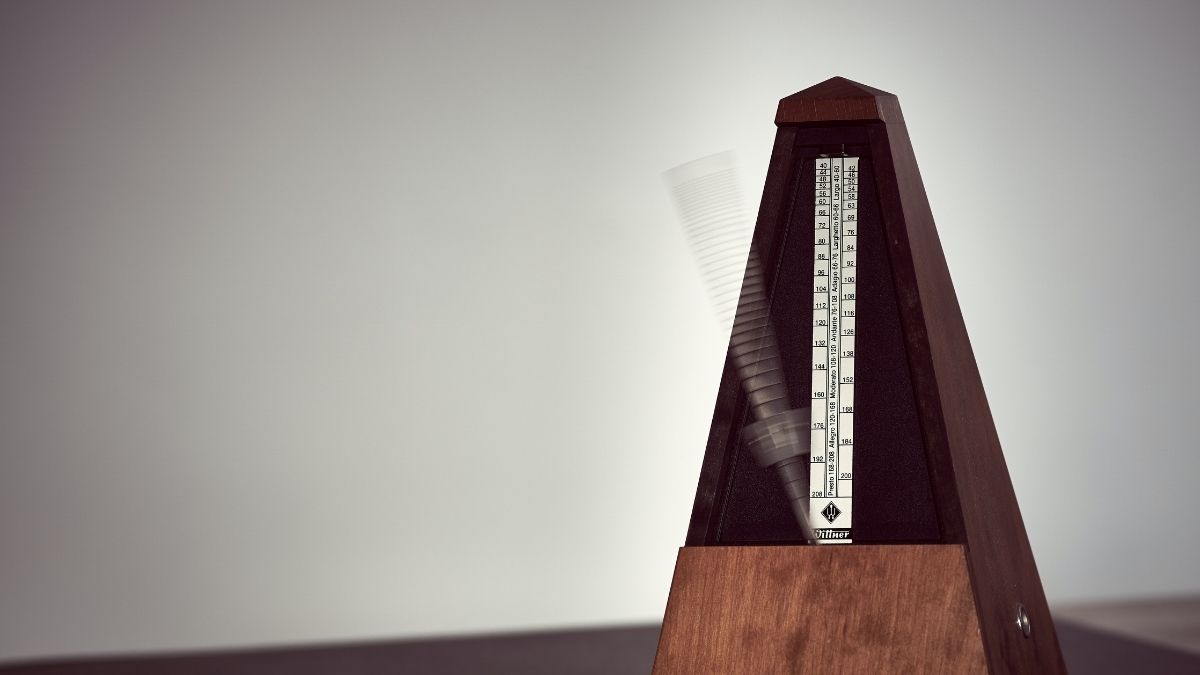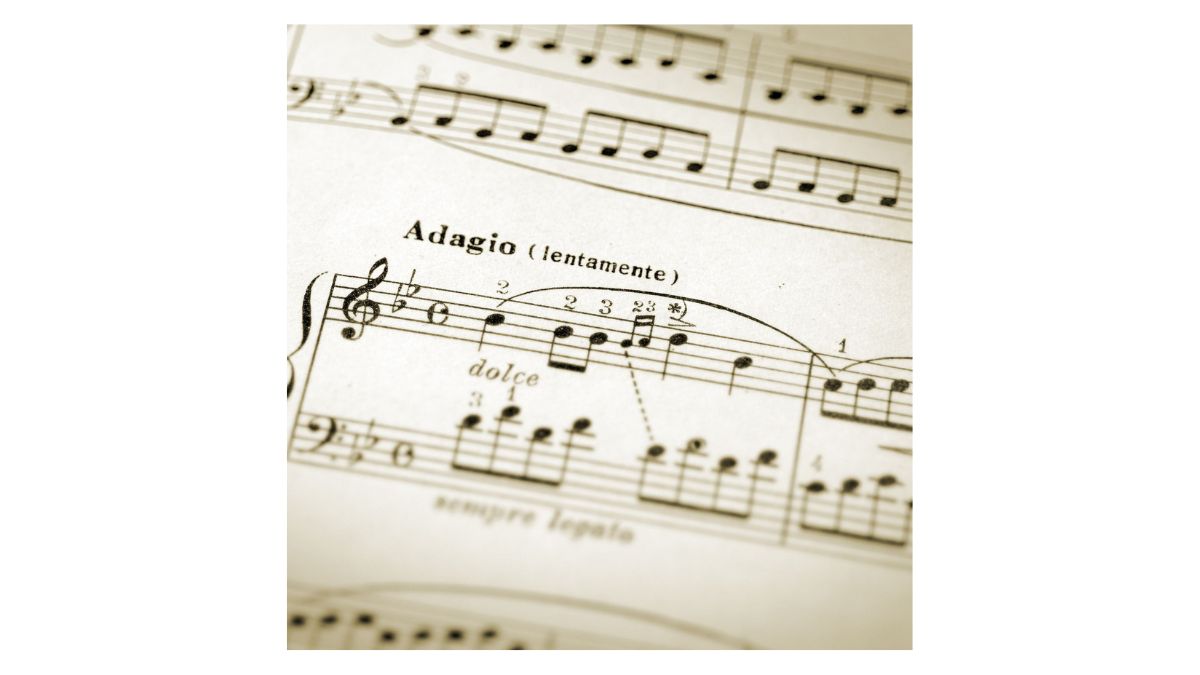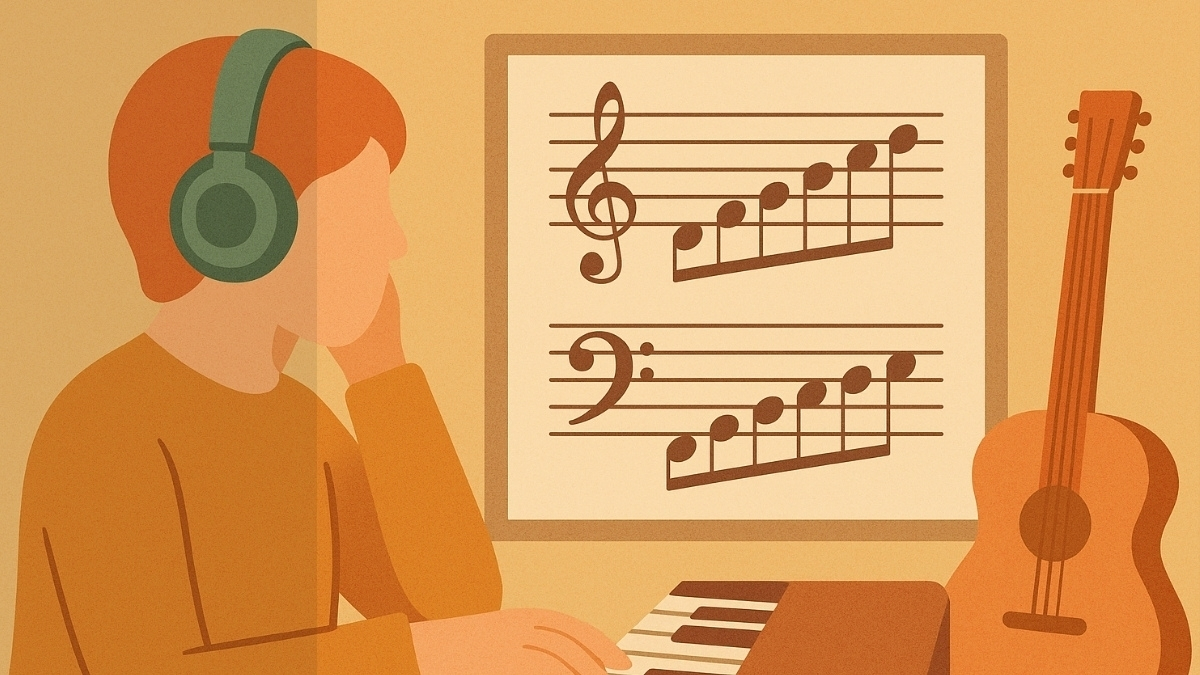Tempo in Music: What is it and How it's Used in Musical Composition

Timing is everything, in music and literally everything else. While it may seem elementary, tempo can be tricky for many musicians.
From finding the right tempos for your tracks, playing “in the pocket”, and understanding how our conception of timing has evolved over time, here is a full breakdown of how time is used in music.
What is Tempo in Music?
Tempo, literally meaning “time” in Italian, is what gives music pacing, space, and dimension. Music has always been an expression of movement, with rhythm being one of the three quintessential building blocks of what makes music, music. In fact, many music genres derive their names from the foundational beats and tempos that give them their unique character and feel (think reggaeton, speed metal, or trap).
Tempo markings originated in the 17th century as composers, many of them Italian, began leaving specific instructions regarding the intended pacing of the music they had written. You may be familiar with some of these terms, including “allegro'', “vivace”, and “grave”. These composers denoted whether the pieces should be played rapidly, slowly, or in a relaxed or urgent manner..

These more general early tempo markings encompassed not only the speed but also the feel of how the piece should be played. Some of these terms carried emotional connotations, as opposed to simple tempo markings.
For example, “presto” and “allegro” both indicate that the piece should be played quickly. However “allegro” also translates to a joyful feeling. Presto on the other hand simply means playing the piece at speed, regardless of the feel.
While these terms are still used in many circles and in tandem with more specific tempos, musicians today are likely much more comfortable expressing tempo using beats per minute or BPM.
What Is Beats Per Minute (BPM)?
Beats per minute or “BPM” is a more accurate mathematical division of tempo used in modern music making, performance and production.
BPM as it is known today rose to prominence in the 19th century after the metronome was invented by Johann Nepomuk Mälzel. Early metronomes were fairly inaccurate. However, they still provided more specific tempos than the broader ranges indicated by composers past.

As you can see from this chart, the ranges given for tempos like “allegro” and “presto” are incredibly broad. Determining the correct tempo within that range was usually the job of the conductor, and up for interpretation. Thanks to the metronome and BPM, this ambiguity is a thing of the past.
Before the metronome, performers could generally estimate the amount of beats per minute by using the seconds hand of a clock. Just like taking a person’s pulse, counting the number of beats within a set time frame followed by some simple arithmetic could provide the approximate number.
Some composers in the 20th century provided total playing times for their pieces, so that performers could then derive tempo from the runtime divided by the total number of beats in all of the measures combined.
Since music has gone digital, BPM is the go-to method for organizing song tempos and communicating our musical ideas. Computers are incredibly accurate, even capable of tracking tempos down to .999 of a beat.
Tempo vs. Time Signature
Tempo and time signatures, while both foundational in rhythm and timing, serve distinct purposes, and are more or less independent of one another.
A time signature tells us how many beats are contained in each measure or bar of music, and which length of note (eighth, quarter, half, etc.) counts as one beat. This is not an indication of speed, as one measure of 4/4 time could be played at any tempo, very quickly or very slowly, so long as each measure contains four beats expressed as quarter notes.
Tempo on the other hand, is a direct indicator of the speed at which a piece should be played back, regardless of the time signature.
There is still a relationship between a piece’s tempo and its time signature, usually in the form of accents and/or subdivisions. This will often come up when playing or recording to a metronome, accenting certain beats within a piece of music. For example, in 4/4 time the metronome will normally accent the first beat in each measure
1 2 3 4
In 6/8 time, some musicians feel more comfortable if both beats 1 and 4 are accented by the hard click of the metronome:
1 2 3 4 5 6
If you want to develop your skills in interpreting and recounting rhythms, test your might with our Rhythmic Parrot game!
How to Find the Tempo of a Song
There are myriad tools available online and via mobile that will help you find a song’s BPM instantly. However, being able to estimate general tempo by ear is a great skill to have as a musician, producer, and songwriter.
The best way to get a feel for various tempos is to practice consistently with a metronome. Take note of how each tempo sounds and more importantly feels. You should be able to closely estimate tempo ranges pretty accurately after just a few weeks or months of practicing this way.
Another way to familiarize yourself with tempo is to produce or write to a metronome click track inside of your recording software.
Many DAWs also have a built-in feature that will allow you to detect tempo, change the project’s tempo to match an audio file or voice memo, or even tap out a tempo using the spacebar or a MIDI controller.
One way to help guestimate tempo is to use reference tracks. Just like we use song references to remember intervals when ear training, we can use popular songs as a basis for memorizing specific tempos.
Queen’s “Bohemian Rhapsody” clocks in at 70 BPM. To find a good reference point for this “adagio” tempo, look no further than the greatest song ever written:
To internalize the feel of 100 BPM, you can think of Beyoncé’s “Crazy in Love”:
120 BPM is the sort of “middle C” of tempos. It is the standard load-in tempo when creating a new session in most commercial recording software. For a good example of 120 BPM, listen to Katy Perry’s “Teenage Dream”:
For an example of 150 BPM “allegro”, refer to the Killer’s “Mr. Brightside”:
200 BPM is really pushing the boundaries of what’s comfortable to play, only because even 1/8th notes at this tempo become incredibly jam-packed. However, many upbeat rock and pop anthems use this tempo. Here is “Kryptonite” by 3 Doors Down:
A simple Google search will provide even more references for memorizing tempo ranges.
How Do I Choose the Correct Tempo/BPM For My Music?
When it comes to choosing the right tempo or BPM for your own music the correct answer is almost always going to be subjective.
Most people associate slower tempos with songs that are sad, introspective, melancholy, and/or moody; while faster tempo is often associated with party songs, working out/going for a run, or as an outlet for boisterous or energetic emotions (think punk rock, thrash metal, or drum and bass).
That being said, there are some cool trends and insights to pay attention to when choosing the right BPM for your song or composition.
Many streaming services now curate playlists grouped by tempo. These playlists are for working out, taking a leisurely stroll, or streaking down the highway on a road trip. If you're releasing music with the hopes of landing on these types of playlists, you may want to position yourself to fit in by choosing a tempo that suits the vibe and range of the playlist(s) you aspire to be selected for.
If you're writing or composing music with the goal of getting that music synced in TV, film, or commercials, you can also choose tempo based on other songs that have been successfully placed in the types of commercials or TV shows that you’re writing for. For example, car commercials often place music between 100-120 BPM, for that cool mid-tempo swagger. Many wireless carrier, internet tech and pharmaceutical commercials tend to sync faster songs, as these products are made to enhance and expedite life, make things more convenient, and generally feel momentous and positive.
Additionally, if you’ve been playing your songs live and are now just getting around to recording them, you may find that recording as little as three BPM slower than you’ve been performing them live will yield fantastic results. Many musicians tend to play their songs a few BPM faster when performing in front of an audience, pushing and pulling with the energy in the venue. Producers refer to this as the “radio tempo” or the “live tempo”.
One final technique is to increase the tempo of a track during the chorus. This is an old production hack to give the chorus more energy and make it pop.
Timing and feel are some of the most neglected elements in many a musician's toolkit. It’s easy to deviate from practicing to a metronome or working on the fundamentals of rhythm and tempo over time, but it’s never too late to circle back for a refresher. Trust us, it’s probably the best thing you could do for your overall musicality!
“It don't [sic] mean a thing, if it ain't got that swing”.



Comments:
Login to comment on this post